Want cleaner skin? Or looking for a way to get a spa-level cleanse? The Double Cleanse is a method of cleansing that achieves a thorough clean that doesn’t leave skin feeling dry.
The Double Cleanse is a two-step cleansing process that utilizes 2 cleansers: an oil-based cleanser and then a water-based cleanser.
Step 1: Oil-based Cleanser
A cleansing oil is an oil-based cleanser that removes oil-based matter – sebum, dirt, pollution, water-resistant makeup, and stubborn sunscreen.
A cleansing balm does the same thing; it just comes in a thick, solid paste (not a liquid oil).
Sometimes a cleansing oil comes in a gel. It looks like a gel, but it melts into an oil when rubbed into skin. And if that isn’t already confusing, I have seen some cleansing gels called “balms.”
A cleansing oil or balm is an excellent way to cleanse oily skin and control blackheads, breakouts, and other congestion. This is because oil attracts oil.
A cleansing oil can penetrate the oil (sebum) inside a pore, encapsulate the sebum, and easily lift it off and anything else oil-based, like makeup and sunscreen.
This is how you achieve a deep, thorough cleanse. It is a much more effective way to remove excess oil, makeup, and sunscreen than using a strong foaming cleanser or wiping skin with an alcohol-based toner (a terrible thing for skin).
While it might seem counterintuitive to apply oil to oily skin, the cleansing oil does not leave an oily residue on skin. Unlike a regular oil, an oil-based cleanser is specially formulated to rinse off easily with water.
HOW IT WORKS
1. Apply a cleansing oil to DRY skin (not when it’s wet), then massage it in using circular motions.
2. Massage the nose area well, where blackheads are common.
3. Next, wet your hands and rub your face with circular motions. The water will make the oil milky. This process is known as emulsification – water emulsifies the oil, which means that water holds onto the oil so that it can be easily rinsed away along with the water.
4. Then rinse your face with water until everything is gone. Either splash with water over the sink or put your face under the shower. The milky residue should come right off. Your skin should feel clean and lighter.
Note: A cleansing oil is different from a regular oil. Look for a cleanser that is actually labeled a ‘cleansing oil’ or ‘cleansing balm.’ If you use a regular oil, it won’t rinse off and will leave behind an oily residue because it is not formulated to emulsify with water.
Occasionally, a cleansing oil is labeled ‘cleansing oil’ but doesn’t rinse off easily. This kind of oil is meant to be wiped off. It’s very confusing. The best thing to do is to read the instructions carefully, and make sure it instructs you to rinse off with water. If it tells you to wipe off with tissue, then it’s not a true cleansing oil.
Step 2: Water-based Cleanser
After the cleansing oil, you cleanse your face a second time with a water-based cleanser. Most cleansers are water-based – including foaming, gel, milky, and creamy cleansers.
In this second step, the water-based cleanser removes sweat and any traces of oil, makeup, or dirt not removed in Step 1. Using a cleansing oil first removes most of the surface debris so that the water-based cleanser can penetrate further for a deeper clean.
You don’t need a large amount of the second cleanser because the oil-based cleanser does most of the hard work. In fact, a small amount of a gentle cleanser will do.
Are you currently relying on a strong foaming cleanser to clean your skin? Many of them are made of strong sulfates, which may strip skin of essential lipids. While you want to remove excess sebum, you don’t want to remove the lipids that make up the Barrier Function. Sulfates tend to do that.
Cleansing Tip
If you cleanse your skin in the shower:
- Apply the cleansing oil before you enter the shower. Massage into skin beforehand (after you’ve undressed so you don’t get oil on your clothes).
- After you get into the shower and turn on the water, rinse off the cleansing oil.
- Don’t go onto the second step (water-based cleanser) right away. Shampoo and condition your hair first. The reason? Some hair products contain comedogenic ingredients, which clog pores. This is why congestion is common near the hairline.
- After washing your hair, cleanse with the 2nd cleanser.
- If you’re exfoliating with a rinse-off product, proceed to the exfoliant.
Why It’s Worth The Trouble
While it might seem like extra trouble and expense to have two different cleansers, it really is worth the time and effort to use both.
A double cleanse truly does remove everything. If you wear makeup or heavy sunscreens, your skin will need that deep cleanse.
After a day of being outside, where there is always some air pollution, you really should get those pollutants off your skin. Pollution damages and ages skin.
The difference between a double cleanse and a single cleanse is very noticeable. Your skin feels much cleaner after a double cleanse.
FAQ’s
How Often Do You Double Cleanse?
You don’t absolutely need to do a Double Cleanse every day. But if you wear makeup or physical sunscreen every day, have oily or acne prone skin, live in a humid climate, or spend a fair amount of time outdoors, then you should definitely double cleanse daily.
If you live in a polluted area or densely populated city, you should double cleanse every night in order to remove all the pollutants that have accumulated on your skin during the day. You may not see it, but those pollutants are definitely there.
I double cleanse every night unless I have been indoors all day, AND I have not worn any sunscreen or makeup, AND it’s winter time when my skin is dry. This happens rarely, since I almost never skip sunscreen.
Do You Double Cleanse Twice Daily?
Some skin care professionals recommend double cleansing twice a day. But I believe the answer depends on how oily you are, whether you wear makeup, and what’s going on inside your body (i.e. how much it has to detoxify).
Oil is produced during the night while you sleep. If you have very oily skin, most likely you see this excess oil as shine when you wake up. A double cleanse in the morning will remove the excess.
But if you’re not oily or blemish-prone – say you’re actually dry – an AM double cleanse may be excessive. In that case, you should save the double cleanse for night time, when your face is most dirty, and use a gentle water-based cleanser in the morning. Surface oil builds up during the day and mixes with makeup, sunscreen, and pollutants. So skin is dirtier at night.
I typically double cleanse once a day, at night. Sometimes I’ll do it more than once if my skin feels especially dirty – for instance, if the weather is hot and humid.
Some Cleansing Oils Can Double Up As Eye Makeup Remover
Since a cleansing oil removes makeup, you may not need a separate eye makeup remover.
It depends on whether the product has any ingredients that irritate the eyes. Most cleansing oils don’t irritate the eye area. I have not personally experienced issues with eye irritation for any of the cleansing oils I have tried. So, sometimes my cleansing oil doubles up as an eye makeup remover. For instance, if I am traveling and trying to save on the number of products to pack.
It also depends on your personal preference. I find removing eye makeup with a cleansing oil messy. The whole eye area gets very black (from mascara or eye shadow), and I don’t want this grime to spread to my forehead or cheeks while massaging the oil into my skin.
So I prefer to remove eye makeup with a cotton pad and separate makeup remover first. Then I apply the cleansing oil.
But ultimately, it just depends on how much eye makeup I have on, whether I am cleansing my face over the sink or in the shower, and how much time I have.
Micellar Cleansing Waters
A micellar cleansing water is a variation of a cleansing oil. In French, it is called eau micellaire or eau micellaire demaquillant.
A micellar water is both an oil-based and water-based cleanser.
The oil particles are packaged in micelles in a water-based solution. Micelles are a type of delivery vehicle in skincare. They encapsulate an ingredient and look like tiny spheres.
A micellar water feels like a water but performs like a cleansing oil. In France, where it is much more common, the micellar water is marketed as a makeup remover.
I find micellar waters extremely effective at removing makeup and sunscreen. But you need a cotton pad. Basically, you pour the cleansing water onto a pad and wipe over your face. Makeup and sunscreen come right off.
When I use a micellar water, I follow it up with a second cleanser (a gentle water-based cleanser) in order to achieve a thorough clean.
The micellar water I use is one by Bourjois, a French drugstore brand. It’s very effective (makeup comes off immediately in one swipe) and budget-friendly ($7-8 USD). Another good French pharmacy brand is Bioderma Sensibio. I wish we had this brand or an equivalent in U.S. drugstores.
Unfortunately, in the U.S. there are very few micellar water options in the drugstore channel. Micellar waters are not popular here. When I do see them, it’s usually as eye makeup removers. Until recently, even cleansing oils (the kind that emulsifies) were virtually impossible to find in drugstores too. But they are starting to pop up (e.g. Simple, Garnier).
Good Cleansing Oils & Balms
My favorite cleansing oil is Dermalogica Precleanse. It’s also one of my favorite skin care products overall – a must-have in my cabinet. It’s one of the few products that I can recommend to anyone with 100% confidence.
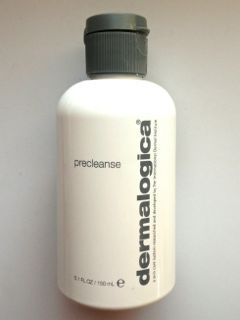 Precleanse is Dermalogica’s rock star product. It cleans skin super well without drying. It picks up EVERYTHING with very little effort. Heavy makeup or sunscreen melts immediately.
Precleanse is Dermalogica’s rock star product. It cleans skin super well without drying. It picks up EVERYTHING with very little effort. Heavy makeup or sunscreen melts immediately.
I particularly like how it’s easy to spread and massage into skin. It is a medium-weight oil that provides long-lasting slip so you can massage for a long while before rinsing. It doesn’t dry up with friction like some oils do.
The oil is also nourishing on skin. It’s made up of borage seed oil, kukui nut oil, and apricot kernel oil – all of which are rich in omega fatty acids, which are good for skin. Borage is especially good for reducing inflammation and calming skin.
The best part is, Precleanse works well for any skin type. The medium-weight consistency is very accessible – for the most oily skin to the very driest of skin. While a heavy oil might be a turn-off to some (it is to me), this medium-weight oil is easily tolerated by all.
Precleanse is so good it can be used alone, especially when skin is dry or in the winter. But if you want a completely thorough cleanse, use a second cleanser afterward.
Other Cleansing Oils:
Light-weight Oil
- DHC Deep Cleansing Oil – A popular oil that is budget-friendly. Has a semi-light viscosity. It is better for skin that isn’t too dirty, doesn’t have a lot of makeup or sunscreen, or skin that is naturally oily.
Medium-weight Oil
- Boscia Makeup-Breakup Cool Cleansing Oil – Excellent removal and doesn’t leave a residue on skin. This is one of my favorites. Highly recommend.
Gel consistency
- Sarah Chapman Ultimate Cleanse – A semi-solid gel. Doesn’t require much friction to get it going. Great removal. Skin feels good afterward. This is my favorite cleansing balm. I love that it is dispensed by a pump (more hygienic, less messy than scooping.) I just wish it were more budget-friendly.
Balm consistency – if you prefer handling solids to liquids
- Emma Hardie Moringa Cleansing Balm – I love this balm and consider it one of my top balm faves. It spreads well, emulsifies well, and rinses off well. It comes with a muslin cloth, but the removal is so thorough that you really don’t need it.
- Banila Co. Clean It Zero Balm – Banila is a Korean brand with a terrific balm. The balm looks and feels like a silicone-based gel (it is described as a “sherbert” texture). But as soon as you apply it to skin, it melts into a light oil. It spreads super easily and doesn’t dry up. Best of all, it is reasonably priced at $18 for ~3 oz.
- Colleen Rothschild Radiant Cleansing Balm – This is another balm with moringa but has a creamier texture. I like this too, but less than Emma Hardie’s because it doesn’t emulsify quite as well. It leaves a residue on skin unless you rinse a lot or swipe over with a muslin cloth or sponge. It’s a great choice for the winter months because it feels nourishing.
- The Organic Pharmacy Carrot Butter Cleanser – A thick balm with a nice blend of organic oils. I love how clean it makes my skin feel afterward. It also brightens skin. BUT, and this is a big but, this balm does not emulsify well. It must be removed with a cloth or sponge. It’s also pricey, so not an economical everyday balm. But it’s a nice-to-have balm for the days when your skin craves oil.
- Darphin Aromatic Cleansing Balm – A thick (very solid) balm that melts fairly easily into oil when massaged into skin. The oil is thick. It cleans well, and leaves a “squeakier” feeling than you’d expect. Only downside is the amount you get in a jar. It’s a small jar (1.7 oz), and one cleanse uses up a fair amount of this balm. This is not an economical option (a liquid oil would be better), but it performs well. And it doesn’t smell as strongly as some of the other Darphin products (a plus for me).
- Eve Lom Cleanser – This is a balm that people love (it’s her signature product). A good cleansing balm but requires using a muslin cloth for removal. I personally do not like to hang washcloths in my bathroom (for sanitary reasons) or have to use a new one every day. But the balm can be removed without the muslin cloth (e.g you can use it with a Clarisonic brush or plan on rinsing A LOT).
- Eve Lom Morning Time Cleanser – A lighter version of the balm that doesn’t require the cloth. I like to use this during the winter when my skin craves oil because it is nourishing on skin. It leaves behind a little residue (in a good way), so it doesn’t give you that squeaky clean feeling. Note: This one and the original balm version have a strong scent, which I am not keen on.
TIP: All the Asian skin care brands have cleansing oils (they are popular in Asia). So those are good lines to explore. They are much more budget-friendly too. Look for Japanese or Korean brands that are sold by Asian online beauty retailers (e.g. DHC is Japanese, Banila is Korean), not the pricey upscale brands you find in U.S. department stores (e.g. Amorepacific, Sulwhasoo, Kanebo, Cle De Peau).
Further Reading:
Want articles delivered straight to your inbox? Sign up here.

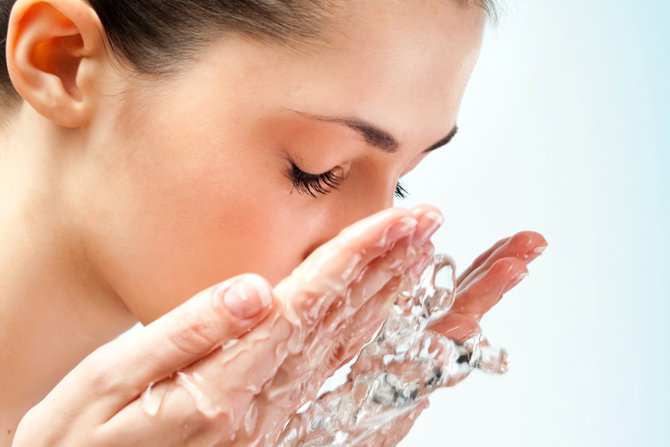


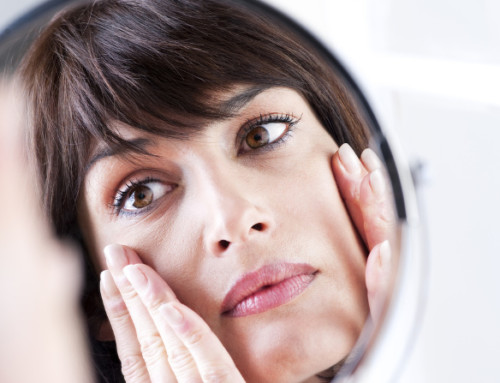

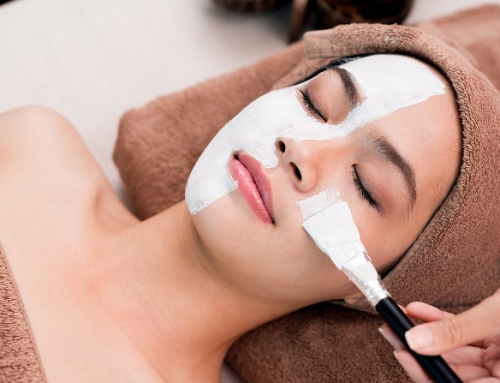

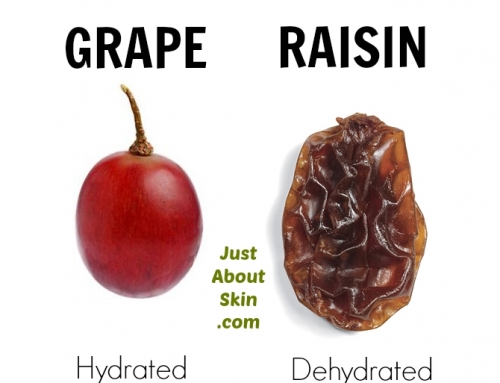

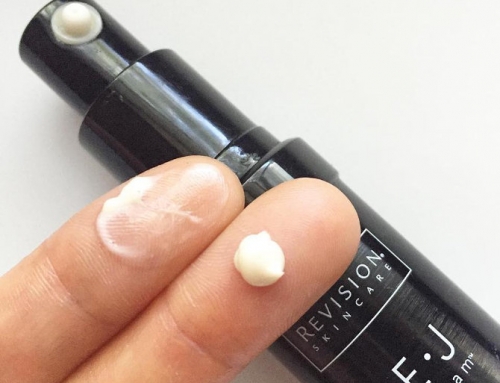
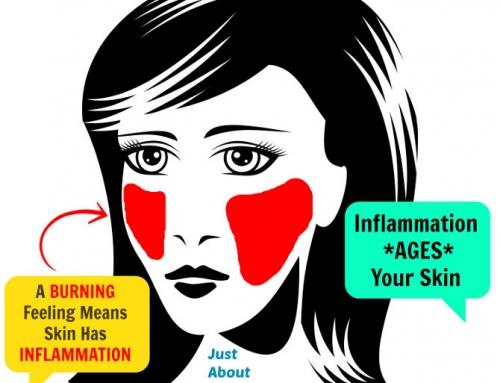
Sephora usually has one of those value packs of goodies and earlier this year I bought one, but I was very skeptical about using the Boscia cool cleansing oil and the NUDE perfect cleanse. I am glad I found your website to teach me about double cleansing. Thanks so much.
You’re welcome! I’m glad to hear you that you found it helpful.. and can put those Sephora goodies to use! 🙂
AMAZING article covering it all including the matter with micellar water which was a bit confusing for me when I was reading about double cleanse method for the first time. It took me some effort to find a really good and clear explanation and here it is.
I have only one question: You said that normal oils will not work because of the emulsification. Recently, I was using oil cleaning method for skin exfoliation and used a jojoba and rosehip oil. (1. step: AHA exfoliator, 2. step: clay mask, 3. step: jojoba and reship oil) So do I have to get a special cleansing oil instead for this double cleanse method?
Thank you very much Pavla, I’m glad it helps you understand micellar water. Yes, you need an oil that emulsifies for the Double Cleanse method. I am not sure if your jojoba rosehip oil emulsifies, but if it doesn’t rinse away easily with water, you will have some residual oil on your skin. If you are prone to blemishes, the ‘lingering’ oil will make it worse. I think it is worth investing in an oil that does emulsify. Skin is so much cleaner afterward!
Thank you for your lovely reply 🙂 There was 1 issue more which I cannot figure out. You say that you use micellar water as step 1 (“When I use a micellar water, I follow it up with a second cleanser (a gentle water-based cleanser) in order to achieve a thorough clean.”)… but I often read that people use it as step 2. What do you think about using it as step 1 product?
People may use it as Step 2 to wipe off residual makeup that didn’t come off from Step 1 cleansing. You can do this. However, it is much more efficient to start off with the micellar cleanser, because you want to get oil and anything oil-based (like makeup or sunscreen) off the skin first. The second cleanser will then remove any of THAT residue, plus provide a deeper clean (since most of the grime is off).
Sometimes, particles of residue from micellar cleansing may be left on skin because you forgot to wipe over it, or because when you wiped over it, the cotton pad you were using was too soiled. You could get around this by using more than one cotton pad, but that can be wasteful. Simply starting off with the micellar cleanser is more economical, plus you get a better clean. Hope this helps! 🙂
Rita I just ordered my very first pre cleanse! I am beyond excited:)
That’s wonderful! I hope you like it and see a difference 🙂
I am so grateful for your website. I have had skin issues my hwole life and this is by far the best website I have come across.
I want to ask you a question regarding exercising after work. I exercise directly after work, will it work to us pre-cleanse prior to my work, then to do my workout, then return home and use a water cleanser is shower?
Hello Briana, thank you very much for your kind words. I’m glad this site has helped you.
Regarding the use of Precleanse, you should use it after your exercise workout, not before. Your skin will be dirtier and sweaty after exercising. This is when you’ll want a cleansing oil to thoroughly remove all the surface oil & debris. You can then follow that up with a second water cleanser if your skin is naturally oily or acneic. Or, you can wait to use the water cleanser right before bed.
The only time I would use Precleanse before a workout is if you are naturally oily/acneic, your skin is exceptionally dirty after a day of work (for instance, the weather is humid and you’re wearing sunscreen and makeup), and you know your workout will involve sweating profusely. In this case, using Precleanse before your workout will be much more comfortable for your skin, and it will minimize clogging of pores. You could then use a water cleanser after the workout to remove the sweat.